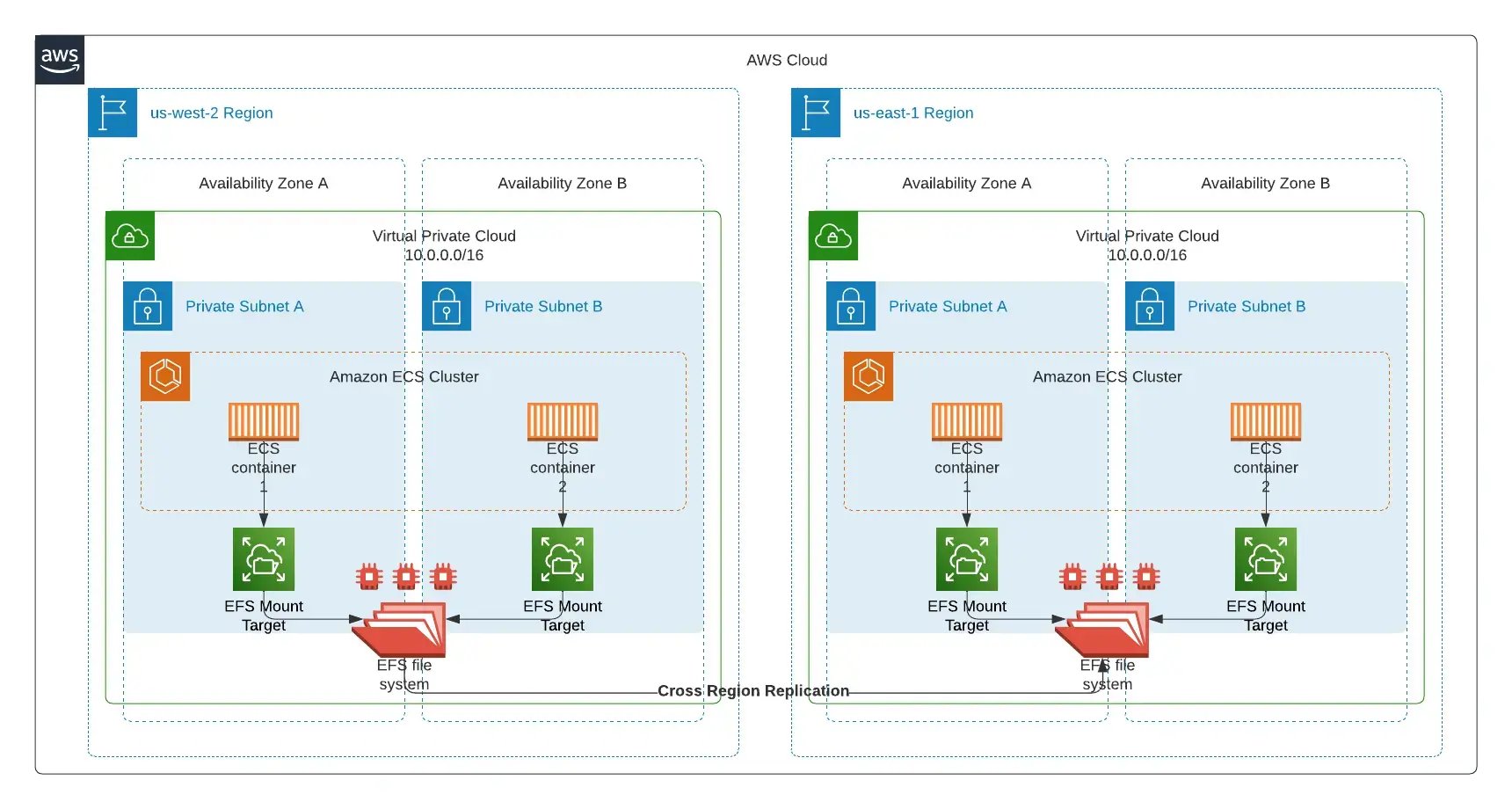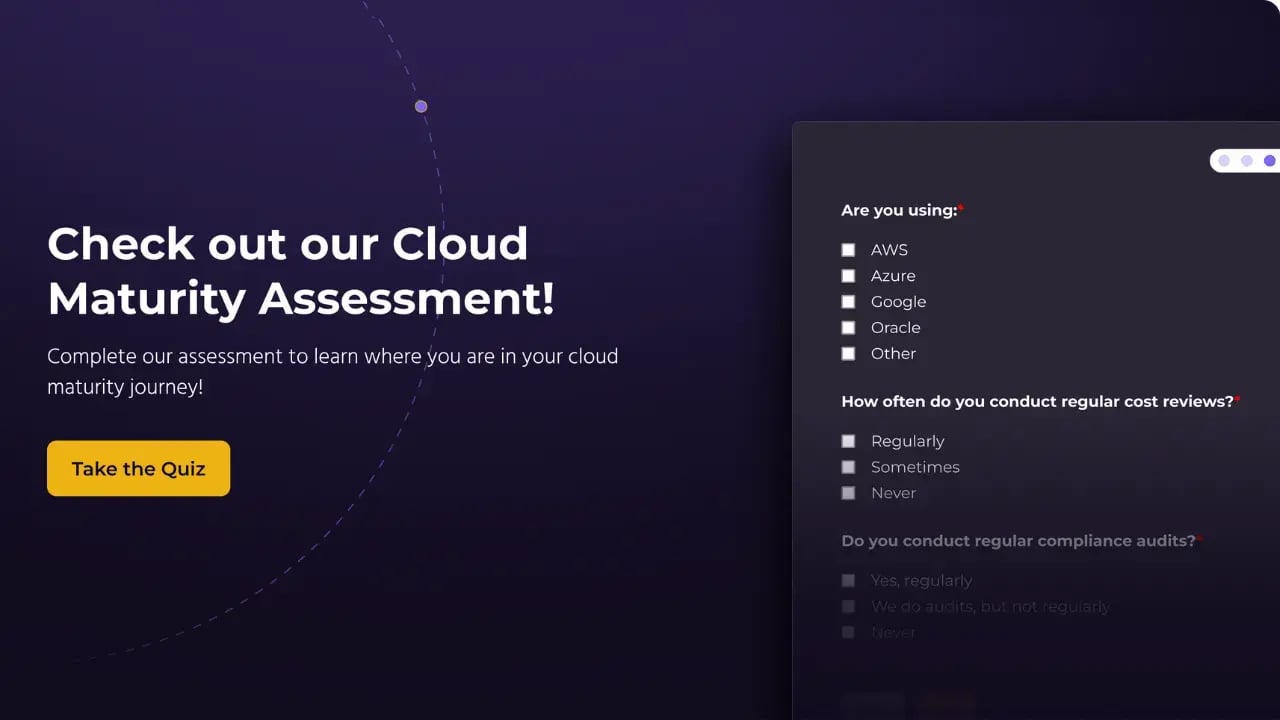What is Amazon Elastic File System (Amazon EFS)?
Amazon Elastic File System (Amazon EFS) is a scalable, cloud-based file storage service for applications and workloads running on AWS. It provides a simple, serverless, set-and-forget elastic file system that can be used with AWS Cloud services and on-premises resources.
Amazon Elastic File System (Amazon EFS), first introduced in 2015, provides a fully managed file system for EC2 instances, AWS Lambda functions, and containers.
Amazon EFS scales to thousands of concurrent clients and connections, providing low-latency performance for a wide range of workloads.

What is EFS replication in AWS?
EFS replication in AWS refers to the automatic copying of data from one Amazon Elastic File System (EFS) file system to another. This feature is designed to enhance data protection, increase availability, and facilitate disaster recovery strategies.
Amazon EFS latest update: cross-regional replication
Recently, Amazon Web Services launched a new functionality - a cross-regional replication for EFS. Amazon EFS Replication makes it simple to keep a current copy of your file system in a different AWS Region or within the same AWS Region.
The data replication process happens with only a few clicks, without the need for extra infrastructure or a bespoke mechanism to monitor and synchronize data changes.
This is particularly useful for disaster recovery scenarios. If one region experiences an outage, you can quickly switch to the replicated file system in another region, minimizing downtime.
The benefits of cross-regional replication
According to AWS's vice president, Jeff Barr, Amazon’s cross-region replication for EFS is now used to preserve copies of EFS file systems for business continuity. It works automatically and assists business organizations in meeting compliance requirements with a recovery point objective (RPO) and recovery time objective (RTO) as part of the disaster recovery strategy.
How cross-regional replication works
Cross-regional replication can be configured inside a single AWS region or across two AWS regions in the same AWS partition in minutes for new or existing EFS file systems. Replication begins immediately after configuration.
Most changes are replicated within a minute, with an overall RPO of 15 minutes for most file systems, and all replication traffic stays on the AWS global backbone. Replication does not use up any burst credits and does not affect the file system's allocated throughput.
Storage Options in Amazon EFS
Amazon EFS delivers a simple, serverless, set-and-forget NFS shared file system storage for use with AWS services and on-premises resources.
It gives you the option of using either Standard Storage Classes, which are designed to store data across at least three Availability Zones (AZ), which are each separated by miles within an AWS Region for higher availability and durability, or One Zone storage classes, which are designed to store data across just one AZ.
How to Implement AWS EFS Replication
You may use Amazon EFS Replication to automatically maintain a copy of your Amazon EFS file system in a Region or AZ of your choice, and you can enable Replication on an existing file system using the AWS Console, AWS CLI, and AWS APIs.
Amazon EFS tracks changes to the blocks used to store files and information and duplicates the changes at up to 300 MB per second, a process that can be watched using the CloudWatch metric TimeSinceLastSync.
A fail-over to the replica can be triggered by removing the replication rule from either the source or destination file system and transforming the read-only destination into a writable file system used in the recovery process.
Notably, customers are responsible for any cross-region or intra-region data transfer fees and the regular EFS storage rates for the original and replica file systems, which are presently accessible in a subset of AWS regions.
Case Study: Enhancing Disaster Recovery With AWS EFS Replication
In one particular instance a few months ago, we worked with a customer who had a shared EFS filesystem across several containers (ECS Fargate). When thinking about Disaster Recovery, the only option available at the time was to take a backup of the EFS share on a schedule, upload it to S3, replicate it to another region, and recover it in another region when needed. This had some key challenges, such as the high operational overhead of maintaining the scripts that ran the backup as well as the monitoring, and since the replication wasn't continuous, the RTO and RPO were limited. It was also really inefficient from the cost perspective since it was incurring not only the data transfer cost between regions but also the S3 costs.
The new feature made it much easier to implement. With EFS Replication, we can have that data automatically replicated in less than ~15 minutes, significantly simplifying the solution and lowering the system's RTO and RPO. In the event of an outage, the filesystem is ready to go, and we can even have some containers prewarmed with an autoscaling configuration, so in case of needing a traffic shift, the system would automatically scale out without incurring high monthly costs.
Here, you can see the Diagram with the simplified example of the architecture for this customer.
This new architecture is not only a better-optimized solution technically, but it also has some tangible business benefits, such as reducing the downtime in the case of an outage, as well as increasing data protection, and simplifying DR operations, all of this while lowering the costs.
Elevate Your Data Management with StratusGrid's Expertise in AWS EFS Replication
To get started with AWS cross-region replication EFS, use Infrastructure-as-Code tools like Terraform or CloudFormation, or use the Amazon EFS Console to configure replication for existing file systems in just a few clicks.
If you would like to have a conversation with us about Amazon’s EFS or could use our expertise on AWS, please contact us. Don't let the complexities of data management and replication slow down your progress. With StratusGrid's expertise in AWS EFS Replication, you can confidently secure your data across regions, optimize your disaster recovery plans, and focus on driving your business forward.
Reach out to us for a personalized consultation or to explore how we can assist you with AWS EFS or any other cloud solutions.
BONUS: Find Out if Your Organization is Ready for The Cloud ⤵️
